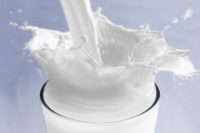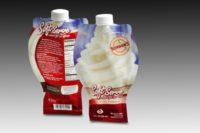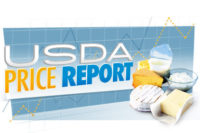Think of it as an SPF for dairy packaging. Just as sun screens promote a skin protection factor, The Chemours Co. is promoting an LPF, or light protection factor, to appear on the front of milk bottles. The LPF number would communicate to consumers that nutritional components in milk, especially riboflavin, have not be degraded by light as the package sits on a retailer’s shelf.
The LPF would assure consumers that the milk they are buying contains all the nutrition they expect.
At this week’s ProFood Tech trade show in Chicago, Divya Chopra was promoting Chemours’ Ti-Pure Protect LPF service. He told Dairy Foods that fluid milk processors would be able to use the Ti-Pure Protect logo if the package blocked light sufficiently. The logo would signify that the packaging has been audited for its ability to screen light.
According to company literature, Chemours would evaluate a dairy’s existing packaging and suggest an LPF that will:
- Ensure light protection of riboflavin in milk product under conditions specified
- Facilitate standard package performance allowing effective vendor management
- Support rapid change of package, including labels and its impact on preservation of light-sensitive nutrient
Riboflavin, one of the nutrients in milk, oxidizes when exposed to fluorescent lights. This reaction not only causes the taste to change, but can also reduce the nutritional content of milk, according to researchers at Virginia Tech, Blacksburg. (See our article: “LED's in retailers’ milk display cases can help to preserve milk's flavor.”)
Some dairies have addressed degradation by using paper gabletop cartons or yellow-colored plastic milk jugs. White gallon jugs allow UV light to degrade riboflavin, Chopra said. Shrink-sleeves over pint bottles are not effective if the area between the cap and the neck is exposed or if the bottom of the bottle is uncovered.



